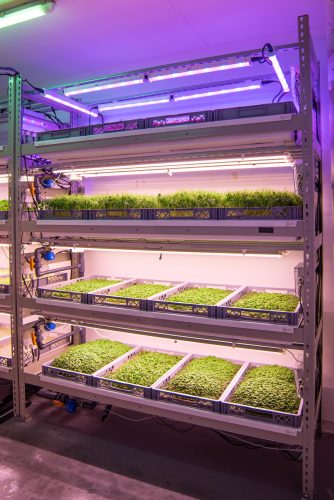Study lays out future steps to optimise vertical farming
- Like
- Digg
- Del
- Tumblr
- VKontakte
- Buffer
- Love This
- Odnoklassniki
- Meneame
- Blogger
- Amazon
- Yahoo Mail
- Gmail
- AOL
- Newsvine
- HackerNews
- Evernote
- MySpace
- Mail.ru
- Viadeo
- Line
- Comments
- Yummly
- SMS
- Viber
- Telegram
- Subscribe
- Skype
- Facebook Messenger
- Kakao
- LiveJournal
- Yammer
- Edgar
- Fintel
- Mix
- Instapaper
- Copy Link
Posted: 16 July 2020 | Sam Mehmet (New Food) | No comments yet
The interdisciplinary study combining biology and engineering set out steps towards accelerating the growth of this branch of precision agriculture, including the use of aeroponics which uses nutrient-enriched aerosols in place of soil.


There is a growing environmental and economic case for vertical farming, according to new research by the John Innes Centre, the University of Bristol and the aeroponic technology provider LettUs Grow. These three organisations have all collaborated to lay out the steps needed to accelerate this form of agriculture in the future.
Vertical farming is a type of indoor agriculture where crops are cultivated in stacked systems with water, lighting and nutrient sources carefully controlled. It is said to be part of a rapidly growing sector supported by artificial intelligence in which machines are taught to manage day to day horticultural tasks. The industry is set to grow annually by 21 percent by 2025, according to one commercial forecast (Grand View Research, 2019).


“Climate change is only going to increase the demand for this technology. Projected changes in regional weather patterns and water availability are likely to impact agricultural productivity soon. Vertical farming offers the ability to grow high value nutritious crops in a climate resilient manner all year round, proving a reliable income stream for growers,” added Jack Farmer, Chief Scientific Officer at LettUs Grow and one of the authors of the study.
Green benefits of vertical farming outlined in study include better use of space, fewer food miles, isolation from pathogens, reduction in soil degradation and nutrient and water recapturing and recycling. Vertical farms are also said to allow product consistency, price stabilisation, and cultivation at latitudes incompatible with certain crops such as the desert or arctic.
“Vertical systems allow us to extend the latitude range on which crops can be grown on the planet, from the deserts of Dubai to the four-hour winter days of Iceland. In fact, if you were growing crops on Mars you would need to use this kind of technology because there is no soil,” said Dr Dodd.
The study set out seven steps – strategic areas of future research needed to underpin increased productivity and sustainability of aeroponic vertical farms.
These seek to understand:
- Why aeroponic cultivation can be more productive than hydroponic or soil cultivation
- The relationship between aeroponic cultivation and 24-hour circadian rhythms of plants
- Root development of a range of crops in aeroponic conditions
- The relationship between aerosol droplet size and deposition and plant performance
- How we can establish frameworks for comparing vertical farming technologies for a range of crops
- How aeroponic methods affect microbial interactions with plant roots
- The nature of recycling of root exudates (fluids secreted by the roots of plants) within the nutrient solutions of closed aeroponic systems.
The report argued that a driver of technological innovation in vertical farms is minimising operation costs whilst maximising productivity – and that investment in fundamental biological research has a significant role.
Related topics
Research & development, Sustainability, Technology & Innovation









